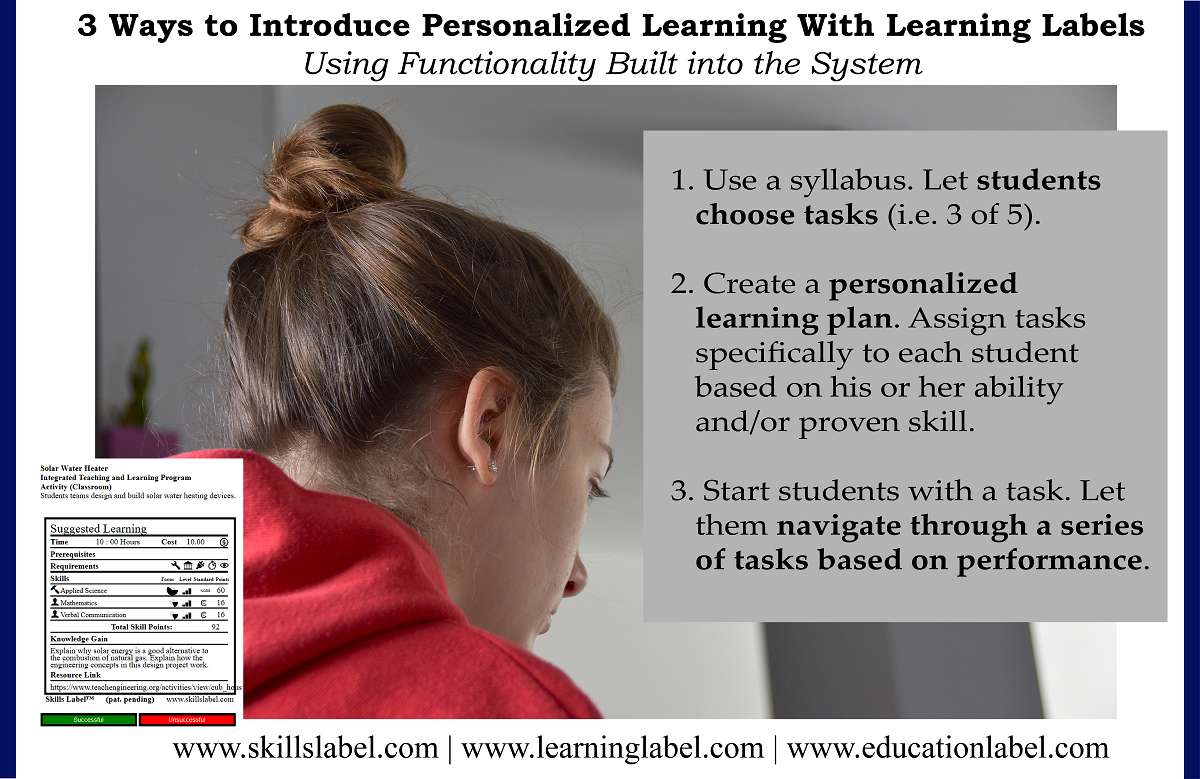Personalized learning is a popular trend in education, higher education, and professional development. The definition of personalized learning is to craft lesson plans or projects to the learner. A teacher, professor, or mentor assigns tasks based on a learner’s abilities and proven skills. The difficulty with personalized learning is it can be a time-consuming process. There are three ways to introduce personal learning with the learning labels technology.
One way is to create a syllabus to represent a course, project, or maybe an onboarding experience (for professionals). This online syllabus (www.skillsyllabi.com) contains all the same fields as a regular syllabus, plus a section to include a collection of learning labels. The idea is to add all relevant tasks where a desired learning achievement is reached and then let learner choose a certain number of them.
One way is to create a personalized learning plan (within the dashboard of learning labels application), where tasks are specifically assigned to learners. The intuitive interface makes the process easy to both assign and unassign tasks to individual learners; this is not a laborious process. Once you have a set of learning labels in place, takes a matter of seconds to complete a personalized learning plan.
One way is to start learners with a task, then let them navigate through a series of tasks based on their performance – one approach to project based learning. This also introduces adaptive learning (on a task level). There is also grading functionality to make the navigation process between tasks automatic.
What is valuable about these last two options is that they are ongoing, meaning they can traverse across education and career stages. A teacher, professor, or mentor works with learners as long as they want to, not bounded by a semester. There are no limits to the how many tasks are in a learning plan or series.
Finally, in a more abstract way, where learners participate in designing the experience, let them create a label on their own. A label represents a hypothesis for what they expect to learn. Verify the accuracy of the label, then let the complete the task.
There is a place for collective learning approaches, but also a place for personalized learning approaches. Students and professionals have different interests (passions), values, and skills, so let them explore (choose), stay engaged, and perform – each supported by the learning label technology.
